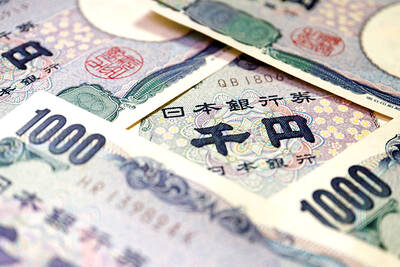Taiwan’s five major convenience store chains had a total of 9,204 outlets nationwide at the end of last year, giving it the highest density of convenience stores in the world, with each store serving 2,500 people, the Fair Trade Commission said yesterday.
Of the total number of stores, 14.3 percent were company-owned outlets, while franchise stores accounted for 85.7 percent of the total, the commission’s tallies showed.
The commission attributed the large number of franchise stores to the relatively low cost and low investment risk.
President Chain Store Corp’s (統一超商) 7-Eleven had the largest market share, with 4,800 outlets last year, followed by Taiwan FamilyMart Co (全家便利商店), the country’s second-largest convenience store chain with 2,324 outlets.
This was followed by Hi-Life International Co (萊爾富) with 1,236 stores, OK Mart Co’s (來來超商) 824 convenience stores and 20 stores operated by Taiwan Sugar Corp (台糖), the survey found.
The number of new convenience stores declined, with the growth rate falling to 1.47 percent last year from 25.38 percent recorded in 1999, mainly because of economic sluggishness, store mergers and emerging market saturation, the commission said.
The number of convenience stores nationwide saw a record-high net increase of 1,002 in 1999, which had fallen to 133 by last year, the commission’s tallies showed.
The commission said that despite market saturation, there was still room for expansion, as the five chains still reported net increases in their store numbers last year.
Separately, the Executive Yuan yesterday approved a service industry development program aimed at boosting the industry’s GDP to NT$11 trillion (US$333.8 billion) by 2012 and its exports to 1.2 percent of the global total by the same year.
The Council for Economic Planning and Development, which drafted the plan, said in a report submitted to a Cabinet meeting yesterday that a lack of simulation abilities made Taiwan’s service industry import-centered rather than export-oriented.
Last year, the export value of the industry stood at US$33.8 billion, which accounted for 0.9 percent of the global total and ranked 28th in the world.
In 2007, the sector’s R&D spending was less than 0.2 percent of its GDP, far lower than the 7 percent recorded in the manufacturing sector, the council said.
The council said that more should be spent in this area to boost the sector’s international competitiveness, improve R&D and innovation performance, create platforms for differentiated services, strengthen talent recruitment and nurture development potential.
The government should guide domestic service providers toward tapping overseas markets and help them overcome barriers to market access by lifting and easing regulations and restrictions, it said.

AI TALENT: No financial details were released about the deal, in which top Groq executives, including its CEO, would join Nvidia to help advance the technology Nvidia Corp has agreed to a licensing deal with artificial intelligence (AI) start-up Groq, furthering its investments in companies connected to the AI boom and gaining the right to add a new type of technology to its products. The world’s largest publicly traded company has paid for the right to use Groq’s technology and is to integrate its chip design into future products. Some of the start-up’s executives are leaving to join Nvidia to help with that effort, the companies said. Groq would continue as an independent company with a new chief executive, it said on Wednesday in a post on its Web

GROWING OWINGS: While Luxembourg and China swapped the top three spots, the US continued to be the largest exposure for Taiwan for the 41st consecutive quarter The US remained the largest debtor nation to Taiwan’s banking sector for the 41st consecutive quarter at the end of September, after local banks’ exposure to the US market rose more than 2 percent from three months earlier, the central bank said. Exposure to the US increased to US$198.896 billion, up US$4.026 billion, or 2.07 percent, from US$194.87 billion in the previous quarter, data released by the central bank showed on Friday. Of the increase, about US$1.4 billion came from banks’ investments in securitized products and interbank loans in the US, while another US$2.6 billion stemmed from trust assets, including mutual funds,

RESPONSE: The Japanese Ministry of Finance might have to intervene in the currency markets should the yen keep weakening toward the 160 level against the US dollar Japan’s chief currency official yesterday sent a warning on recent foreign exchange moves, after the yen weakened against the US dollar following Friday last week’s Bank of Japan (BOJ) decision. “We’re seeing one-directional, sudden moves especially after last week’s monetary policy meeting, so I’m deeply concerned,” Japanese Vice Finance Minister for International Affairs Atsushi Mimura told reporters. “We’d like to take appropriate responses against excessive moves.” The central bank on Friday raised its benchmark interest rate to the highest in 30 years, but Bank of Japan Governor Kazuo Ueda chose to keep his options open rather than bolster the yen,

Even as the US is embarked on a bitter rivalry with China over the deployment of artificial intelligence (AI), Chinese technology is quietly making inroads into the US market. Despite considerable geopolitical tensions, Chinese open-source AI models are winning over a growing number of programmers and companies in the US. These are different from the closed generative AI models that have become household names — ChatGPT-maker OpenAI or Google’s Gemini — whose inner workings are fiercely protected. In contrast, “open” models offered by many Chinese rivals, from Alibaba (阿里巴巴) to DeepSeek (深度求索), allow programmers to customize parts of the software to suit their